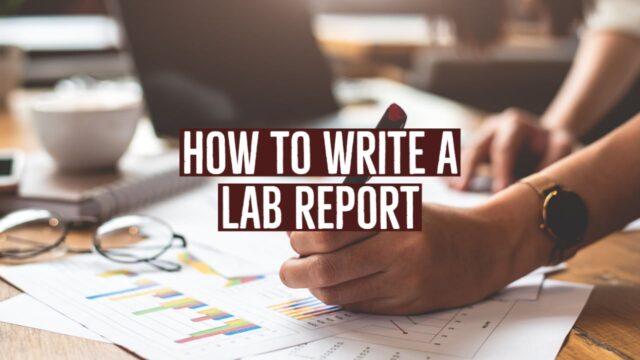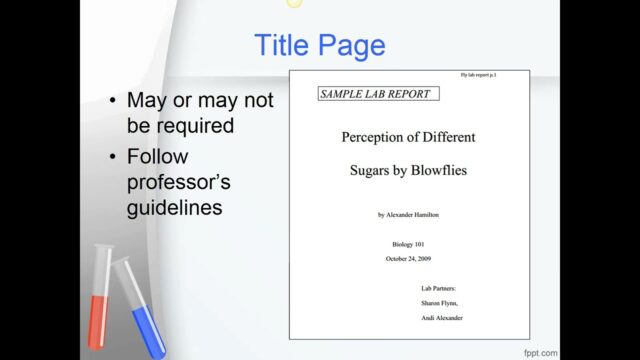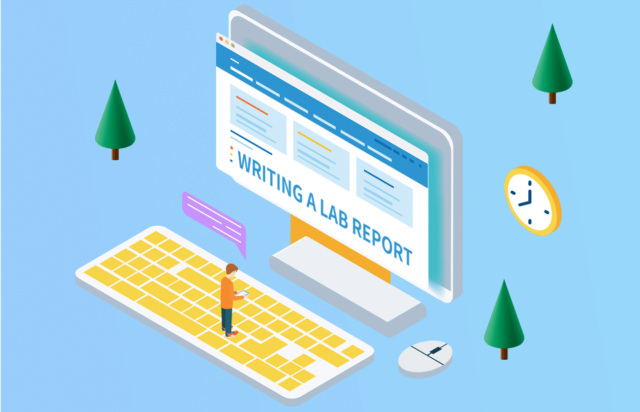
Writing a lab report is among students’ most tedious and challenging tasks. The academic document serves as a simple expression of every scientific experiment performed in the laboratory. It comes with a broader description of all the processes undertaken during experiments. Therefore, the report covers the procedures, extensive outcomes, and explanations for every experiment.
The title is the most crucial element, along with the writer’s name, the course completed, and the teacher.
The abstract (Summary of your report)

It includes your key findings, conclusions, and significance.
Introduction phase
It is in this section that you will need to include some of the important elements, such as the abstract, techniques used, and even the experimental materials used in the entire experiment.
The methods, experiment findings, conclusion, references, and appendices should all be included.
Writing your lab report – A Simple Guide
You shouldn’t worry if specific report outlines seem too complicated. The following principles, which apply to every section of this scientific paper, will help you complete it more quickly. Therefore, let us look into some fundamental principles to ensure in most of the sections within the lab-based scientific document.
The Title Page
Among other pertinent details, include your name and registration number on the title page. Dates and the experiment’s title must also be included. The names of the course teachers or tutors may occasionally be required.
The synopsis – Abstract
The abstract covers a summary of what you’ve included in your report. It provides:
- A clear description of your experiment.
- The main area of focus.
- The findings of the experiments performe
- Writing this kind of academic document could be challenging, tedious, and time-consuming if you are a busy student. Nonetheless, you shouldn’t struggle writing lab reports. Professionals often write my lab report for me, which enables me to have an easy time and focus on other urgent tasks. In any case, it is essential to understand how all these are done. Therefore, let’s comprehend everything by first exploring the structure of a lab report.
Structuring your lab report

Source: abouttimemagazine.co.uk - Structure is among the critical considerations you must understand before writing a lab report. Instructors will always provide outlines and guidelines for various lab reports based on the study area. However, the standard structure for lab reports should cover the abstract; it should have a title page, the introduction, the experiment, materials to use in the experiment, all the procedures involved, results, the conclusion, and the appendix.
How do you format your lab report?
- The formats may change depending on the teacher’s requirements and standards. As a result, it is crucial to constantly verify and adhere to the instructor’s criteria regarding the particulars of any laboratory-based academic document.
- You may always use the most popular formatting style for laboratory-based academic documents and research papers. However, you only need to do that when the standards have not been clarified or appropriated. There’s always the option to use the MLA, Chicago, or APA formatting styles.
- The scientific paper must also follow the APA style guidelines and have a title page, abstract, and references.
What is the extent of writing your lab report?
- Comprehending the length of this academic document is likewise crucial. But generally speaking, some criteria, such as the experiment assigned, determine how long it takes. It also mainly depends on the majority of the guidelines that the course teacher provides. The raw data and visual aids, such as graphs, should be included in a typical report, which needs to be five to 10 pages long.
A comprehensive overview of your lab report outline
- This scientific document and other research papers are comparable. Academic documents need a defined report format and a well-defined framework, just like any other type of research paper. The majority of lab reports often adhere to the following summary:
The title page

Source: m.youtube.com
Keeping your abstract short, explaining the experiment’s purpose clearly, and including a couple of keywords in your discussion of the results are some recommended practices for synopsis writing.
The introduction part
While outlining the experiment’s objectives, the introduction offers room to develop your hypothesis. You should always add context and information on related current studies or investigations at this point.
Equipment (Methods and Materials)
The Equipment portion of your lab-based scientific paper is crucial. It would help to list all the steps, materials, and methods you used in the experiment in this section. The essential aspects of experimental procedures must be included so that readers who need to explore the experiments can have all the information they want.
The procedure phase
You can record the experiment’s sequential steps in chronological sequence in the procedure portion of your experiment-related academic document. There is a need to include more thorough information on the hands-on activities engaged in the report because it is one of the most critical sections of the academic document.
Results/Outcomes of the lab-based experiments

All of the experimental results obtained from the experiments are covered in the results section. The experiment’s results must be thoroughly discussed and explain how they relate to the report’s proposed hypothesis. Always remember to write this scientific document succinctly and clearly.
The Conclusion section
Consider offering summative remarks that conclude from the conducted experiments at the conclusion phase. During this stage, you might recommend more related scientific work or studies. Additionally, you need to discuss the consequences of the experimental data accurately. Ensure to make your conclusion section brief.
References and appendices
You must cite every source you used for research during the experiments in the references section. The lab manual and other essential study topics must be included in every assignment.
An Appendix section containing the used figures and graphs should conclude the lab report. You may always add unprocessed data to tables, charts, and other data visualization tools in this area. Each appendix must be cited in the main body.
Conclusion
Completing a lab report is among the most straightforward tasks you can undertake. To write a lab report, you only need to know the overall format, some fundamentals, and writing advice. If you are struggling, consider starting early, taking comprehensive notes for every experiment done, ensuring clarity and preciseness, and, more importantly, seeking help when necessary.









